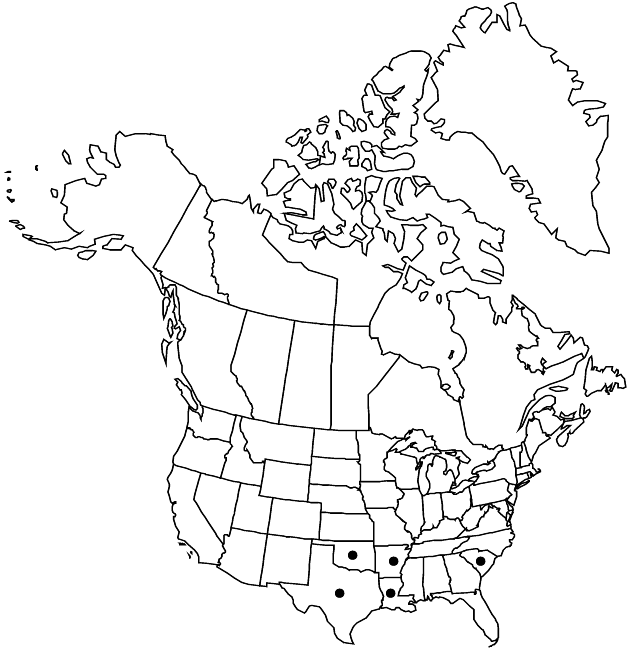Rudbeckia maxima
Trans. Amer. Philos. Soc., n. s. 7: 354. 1840.
Perennials, to 250 cm (rhizomatous, roots fibrous). Leaves bluish green (heavily glaucous, dried blades white under UV light, at least abaxially), blades elliptic, ovate to obovate or pandurate (not lobed), leathery, margins crenate, dentate, or entire, apices acute to rounded, faces glabrous; basal petiolate, elliptic to ovate, 15–65 × 4–15 cm, bases attenuate to cuneate; cauline petiolate or sessile, 7–50 × 4–14 cm, blades ovate to pandurate, bases cuneate to auriculate (and clasping). Heads borne singly or (3–15) in ± corymbiform arrays. Phyllaries to 1.5 cm (ovate to lanceolate, margins ciliate). Receptacles ovoid to conic; paleae 6–8 mm, apices mostly rounded, abaxial tips glabrous (hairy subapically). Ray florets 10–20; laminae elliptic to oblanceolate, 30–80 × 8–15 mm, abaxially sparsely hairy. Discs 40–80 × 15–35 mm. Disc florets 300–600+; corollas maroon (at least distally), 4–6 mm; style branches ca. 2.2 mm, apices acute. Cypselae 6.5–7 mm; pappi of 4–6 scales to 1.5 mm. 2n = 36.
Phenology: Flowering spring–summer.
Habitat: Mesic pastures, roadsides
Elevation: 10–70 m
Distribution

Ark., La., Okla., S.C., Tex.
Discussion
Rudbeckia maxima was introduced in South Carolina and possibly elsewhere through horticultural and agricultural activities. It is a cultivated ornamental and is sometimes a problematic pasture weed.
Selected References
None.
